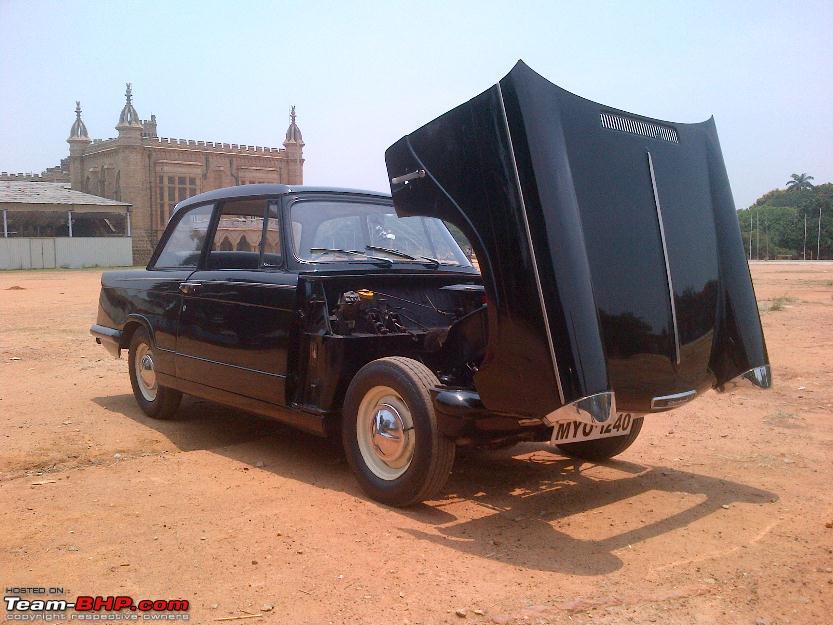News
The hyper-cool Front-hinged bonnets
Today, across the world, only a handful of cars (mainly high performance machines) come with front-hinged bonnets.
The hyper-cool Front-hinged bonnets

Most cars have their engine bays in the front of the cabin. To access the engine, one has to lift a bonnet, which is generally hinged just below the front windshield. In some cars, however, you will find bonnets which are hinged at the front end of the engine bay – near the radiator.
When I saw a car with a front-hinged bonnet for the first time (sometime in the early 1980s), I found it really cool. I do not remember the car, but the idea of the bonnet opening in the “reverse” direction stuck in my head. I clearly remember old BMWs and Jaguars having bonnets that were front-hinged.

Among the cars manufactured in India, the Premier 118NE, Standard Herald and Standard 2000 are some names that come to mind.

Now, BMW and Jaguar have now almost completely shifted to conventional bonnets and nothing manufactured in India comes with a front-hinged bonnet either. Today, across the world, only a handful of cars (mainly high performance machines) come with such bonnets.
Here are the reasons why front-hinged bonnets gained popularity.
Better engine access and lighting:
One of the reasons why they gained popularity was that they provided better access to the engine. Most conventional bonnets open at an angle of ~45 degrees. This limits the headroom available while working on the engine. Front-hinged bonnets, on the other hand, can open at almost 90 degrees. Lighting too is improved with the bonnet almost completely out of the way.

Safety:
In older cars, bonnet latches could fail. If one failed on a car with a conventional bonnet while travelling, the bonnet would open in such a manner that the view from the windshield would be obstructed. Worse still, the windshield could crack on impact. In the case of high-performance cars travelling at higher speeds, this is likely to prove even more dangerous compared to regular cars.
In the case of a front-hinged bonnet, the bonnet opens in the same direction that the car travels and the above-mentioned situation could be avoided.
Now, let’s have a look at the reasons why front-hinged bonnets fell out of favour
Modern and safer construction of conventional bonnets:
Modern cars have started getting conventional bonnets with advanced construction and much better latches. Due to this, nowadays, it is extremely rare that a latch fails and a bonnet flies open. Conventional bonnets are a lot safer than they used to be.

If you have a look at some modern cars, their conventional bonnets open at a much greater angle than before. This allows easier access to the engine from not only the front of the car, but also the sides as there is much greater headroom available.

In the case of a front-hinged bonnet, you get just the sides of the engine bay to work, which is less convenient.
High cost of repairs:
In traditional front-hinged bonnets, the headlight mounts, front fenders and radiator grille are integrated into the bonnet design. In case there is an accident, damage to any one of these parts would mean all the parts would need replacement. This in turn means additional costs while doing any repair work.

Today, there are some front-hinged bonnets without any other parts integrated into them, but they do not open completely and restrict access to the engine bay. These are still helpful in performance cars, in which the engine is pushed right against the firewall to achieve better weight distribution. Anyway, they still look hyper-cool!

- Tags:
- Indian
- Member Content
- Other
- Bonnet
- Engine

















